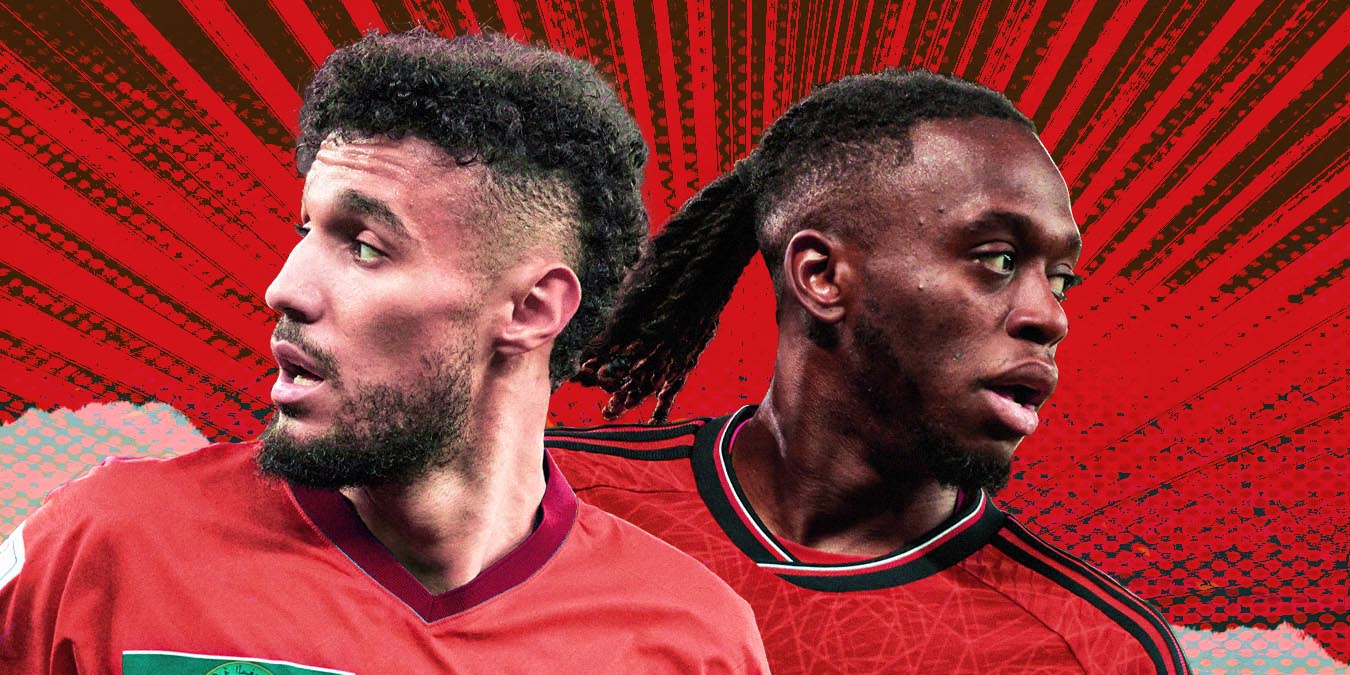Manchester United have sold Aaron Wan-Bissaka to West Ham and replaced him with Noussair Mazraoui. We analyse the difference in style between the two right-backs.
When Manchester United’s new management structure began to take shape following the arrival of Sir Jim Ratcliffe and INEOS, many fans were hopeful manager Erik ten Hag would be left with less responsibility in recruitment than he appeared to have beforehand.
It had been a common criticism of the Dutchman that he was allowed to routinely turn to players he already knew or had some connection to following his days in the Eredivisie. Lisandro Martínez, Christian Eriksen, Tyrell Malacia, André Onana, Antony and Sofyan Amrabat could all fit into that category, and it’s fair to say they’ve not all been successes.
Nevertheless, it would appear Ten Hag’s contacts book retains a certain degree of prominence in United’s transfer planning for 2024-25, with Matthijs de Ligt and Noussair Mazraoui the latest to join the club – both coming from Bayern Munich – having also played for the manager at Ajax.
It’s a situation that may frustrate certain sections of the fanbase in one sense considering the rather mixed record Ten Hag-affiliated players have had at Old Trafford over the past two years, with this their first transfer window since the appointment of Dan Ashworth as sporting director.
But, specifically looking at Mazraoui’s arrival move, it coincides with Aaron Wan-Bissaka’s departure to West Ham. Such a combination of transfers does represent something of a shift for United at right-back, and a welcome one in the eyes of many.
The two players are significantly different in style. If we ignore the fact he cost roughly £50 million, Wan-Bissaka has been a useful player for United in that he’s largely a dependable defender; he’s been criticised at times for his positioning, but there aren’t many better one-v-one defenders in the world, and his tackling ability has often made up for any apparent positional deficiencies.
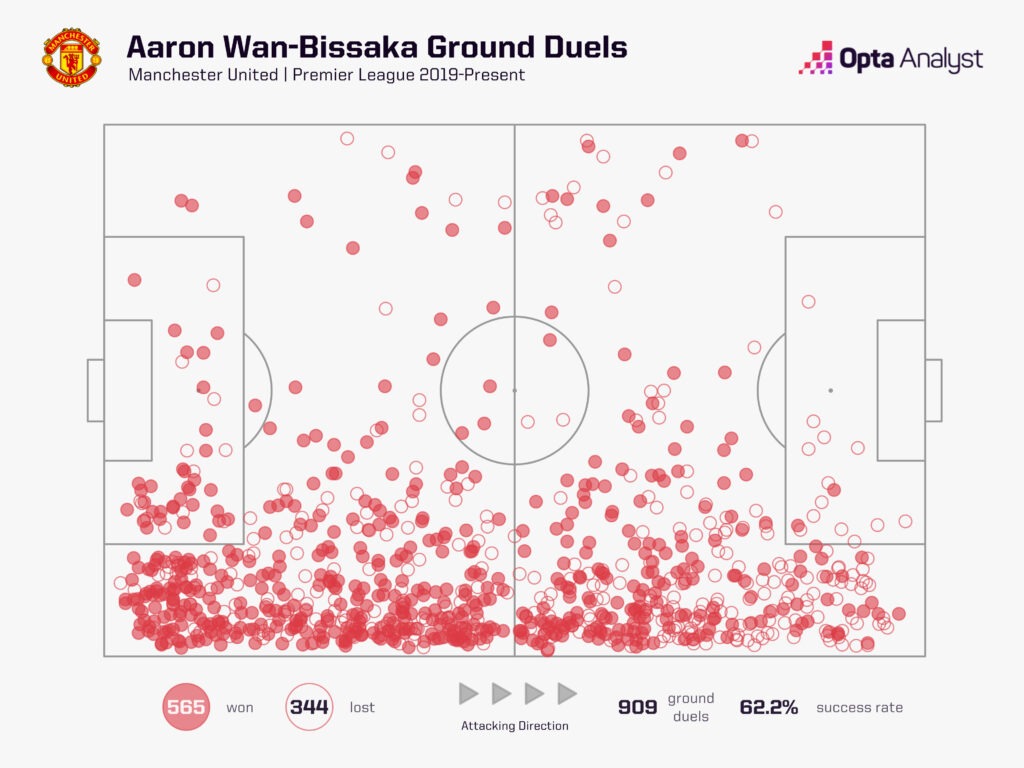
However, there’s no getting away from his technical shortcomings, especially in the final third. It had been hoped that he’d improve steadily in this respect after moving from Crystal Palace in 2019, but five years on it’s difficult to make much of a case for that being a reality.
Of course, that doesn’t necessarily have to be a problem. After all, Wan-Bissaka is generally considered a defensive-minded full-back, and in that respect there aren’t many better. But if Ten Hag wants United to exert more control in matches after being notoriously open last term, improving technical standards seems a reasonable strategy. In the modern game, full-backs often have a very important role in establishing possession dominance for the biggest clubs, and for all of his strengths, Wan-Bissaka is unlikely to ever be that kind of right-back.
Mazraoui, on the other hand, feels like a better fit. An obvious part of that is the fact he came through Ajax’s academy and has played for Ten Hag before – not that this is a guarantee of him being a good signing, as we’ve already noted.
He is, though, a more technically gifted player than Wan-Bissaka and naturally inclined to push forward, trying to impact the play in attack. That could also potentially help whoever lines up on the right wing, as Mazraoui’s desire to provide assertive over- and under-lapping runs is likely to be greater than that of Wan-Bissaka.
The heat maps below provide a fairly succinct summary of how differently the two players have operated over the past two years.
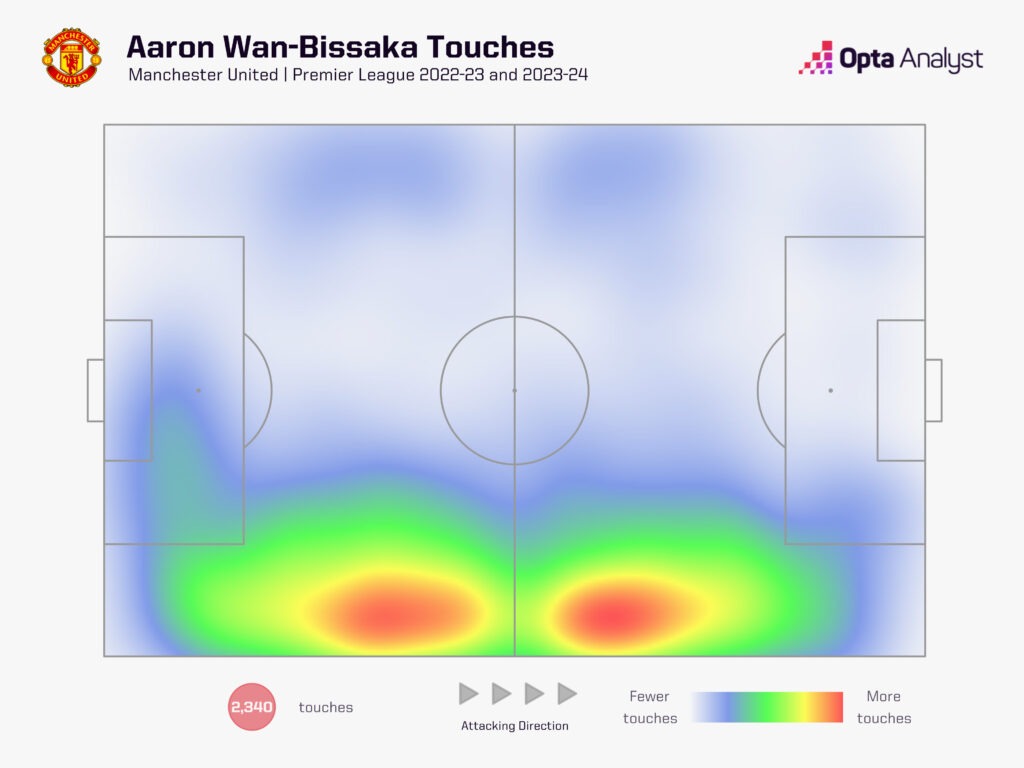
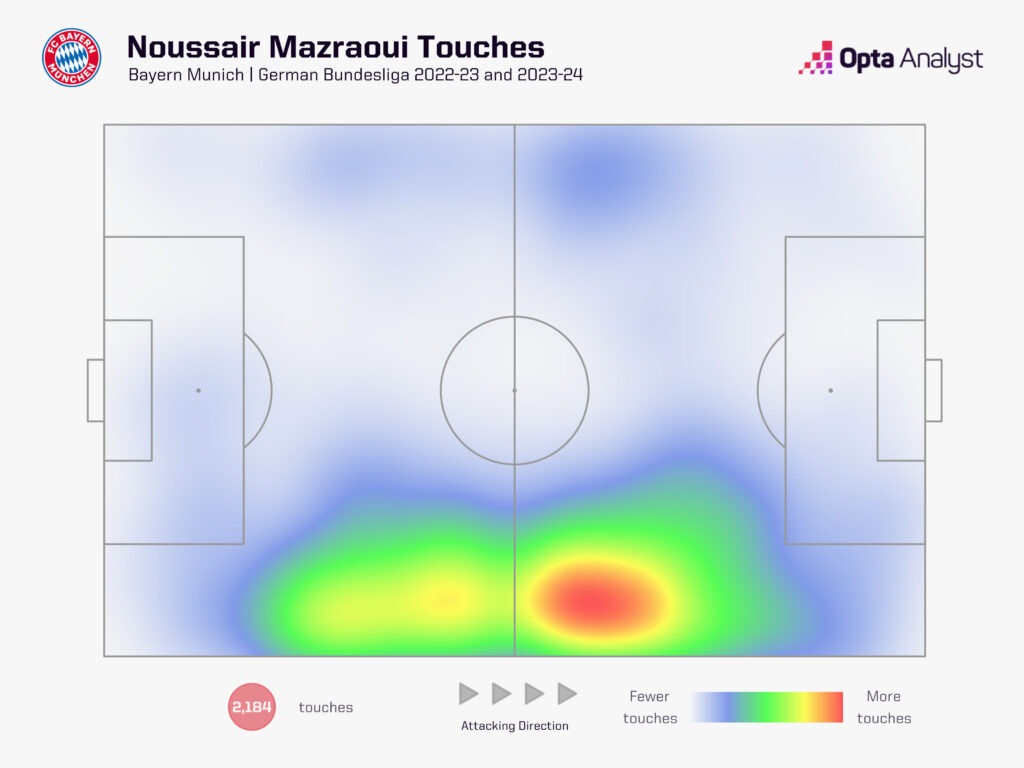
While Wan-Bissaka has seen the ball in focus points in both halves of the pitch, Mazraoui’s touches have been more concentrated to the attacking half. Team styles are a factor in that, of course, though no one would consider Ten Hag’s United to have been a particularly defensive side.
Mazraoui’s technical talents and greater attacking mentality have unsurprisingly seen him provide more of a threat in the final third over the past two years at Bayern than Wan-Bissaka has over the same period, with the Moroccan far more comfortable carrying the ball upfield and combining such moves with taking a shot or looking for the killer ball.
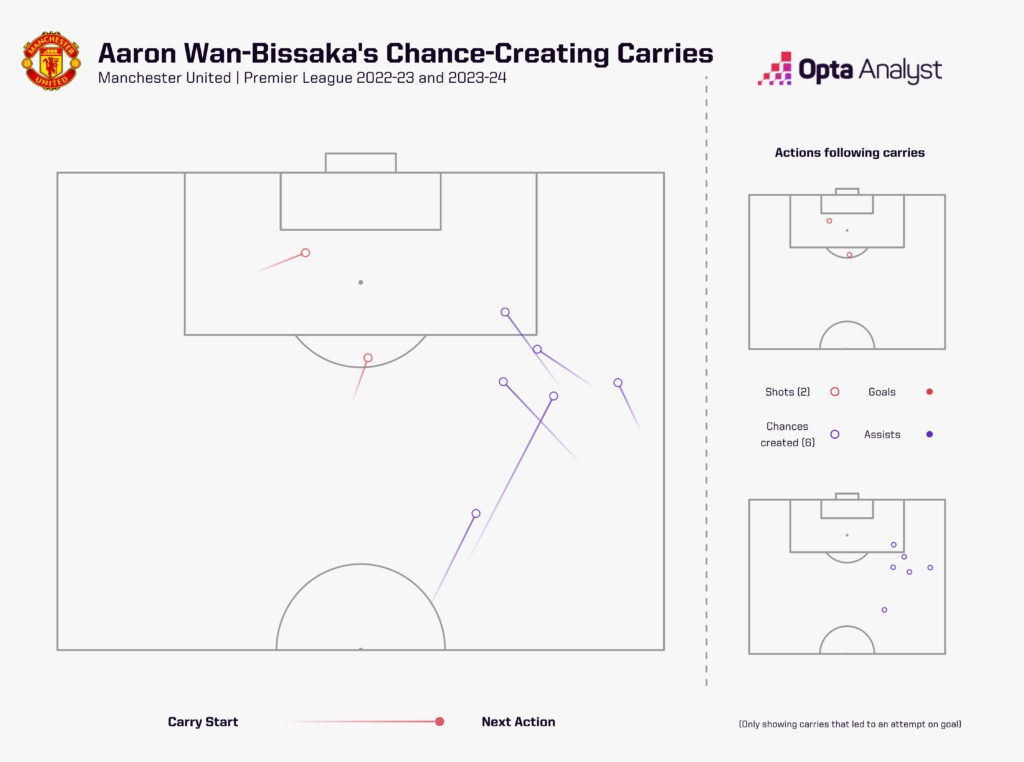
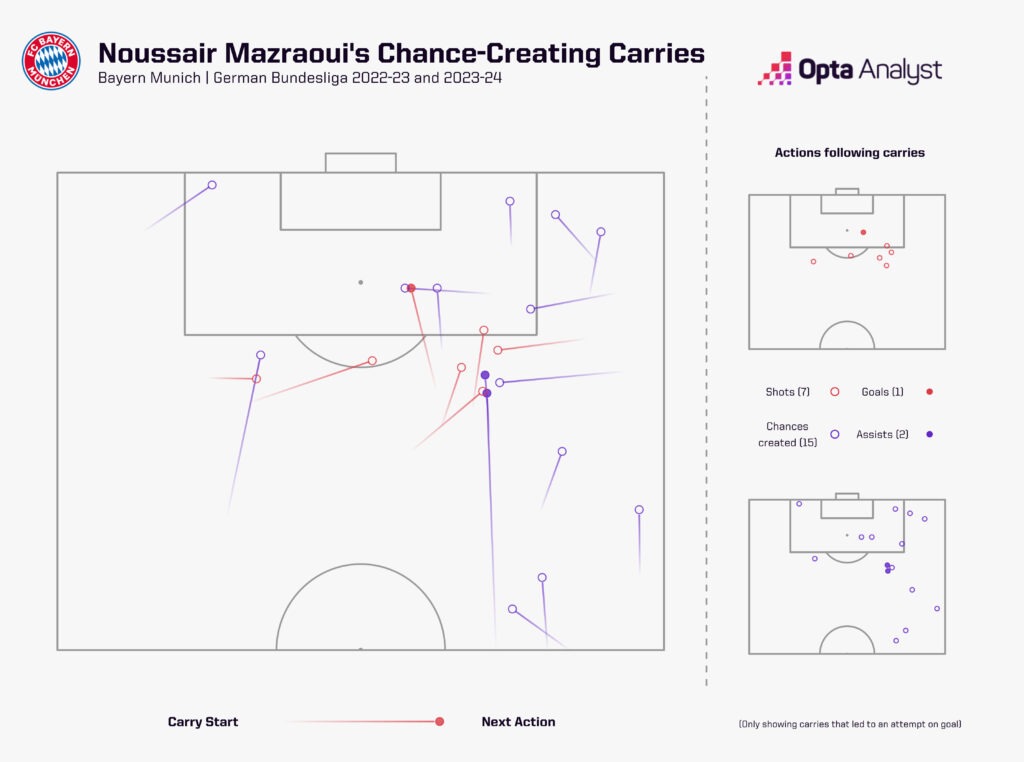
While a look at their chance creation totals over the past two years might not suggest a massive difference, on a per-90-minute basis there is quite a gulf, with Wan-Bissaka registering 0.76 and Mazraoui on 1.35, putting him inside the top 87% among full-backs in Europe’s top five leagues over that time.
In fact, a cursory glance at the Opta Player Radars below highlights their vast difference in styles from an attacking perspective. Again, team tactics can influence metrics, but that alone won’t explain the large spikes in Mazraoui’s favour.
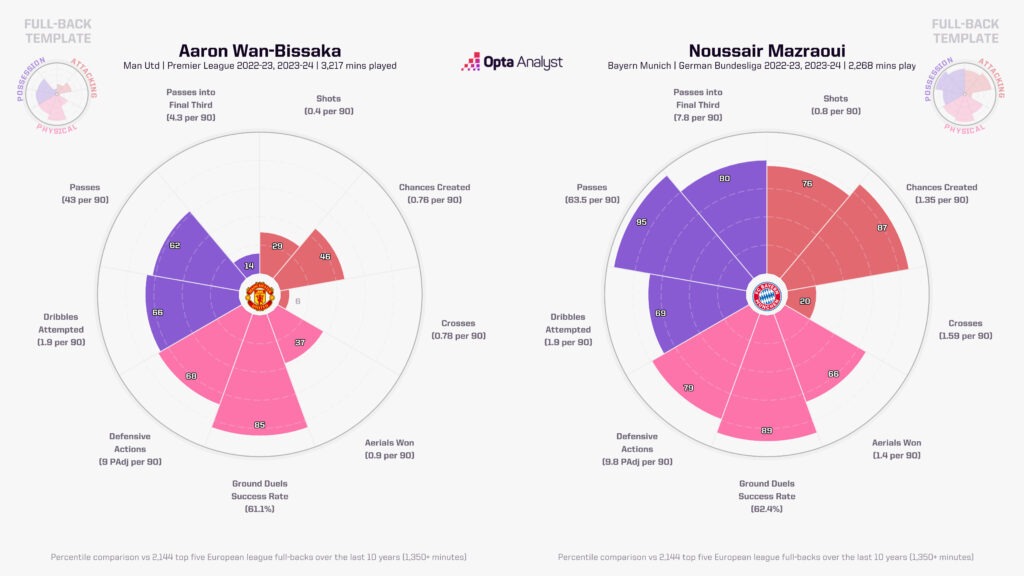
Having seen that, it won’t come as a huge surprise to learn Mazraoui spent his formative years learning the ropes in midfield until Ten Hag converted him into a right-back shortly after breaking into Ajax’s senior squad.
For a time, he struggled to see off the competition of Sergiño Dest, but Mazraoui found his best level in Ten Hag’s final season in Amsterdam, with the Morocco international thriving in a role that saw him moving frequently into central spaces – his on-pitch relationship with Antony was also considered to be strong.
Defensively, he isn’t as imperious in one-v-one situations as Wan-Bissaka, but his record in ground duels was still fairly impressive over the past two seasons, with a 62.4% success rate putting him in the top 89% for full-backs and ahead of the new West Ham defender.
Furthermore, over the two seasons in question, Mazraoui’s 68.9% success rate was also an improvement on Wan-Bissaka’s 61%. The standard of opposition of course comes into this, and some will argue the latter faced better wingers in the Premier League, though that’s obviously not really possible to quantify.
Mazraoui also has the added advantage of being fairly comfortable in numerous positions, including at left-back. Wan-Bissaka looked uncomfortable there on the rare occasions he was asked to fill in, meaning Diogo Dalot became something of a back-up on the left with Luke Shaw and Malacia both missing much (or all in the latter’s case) of 2023-24.
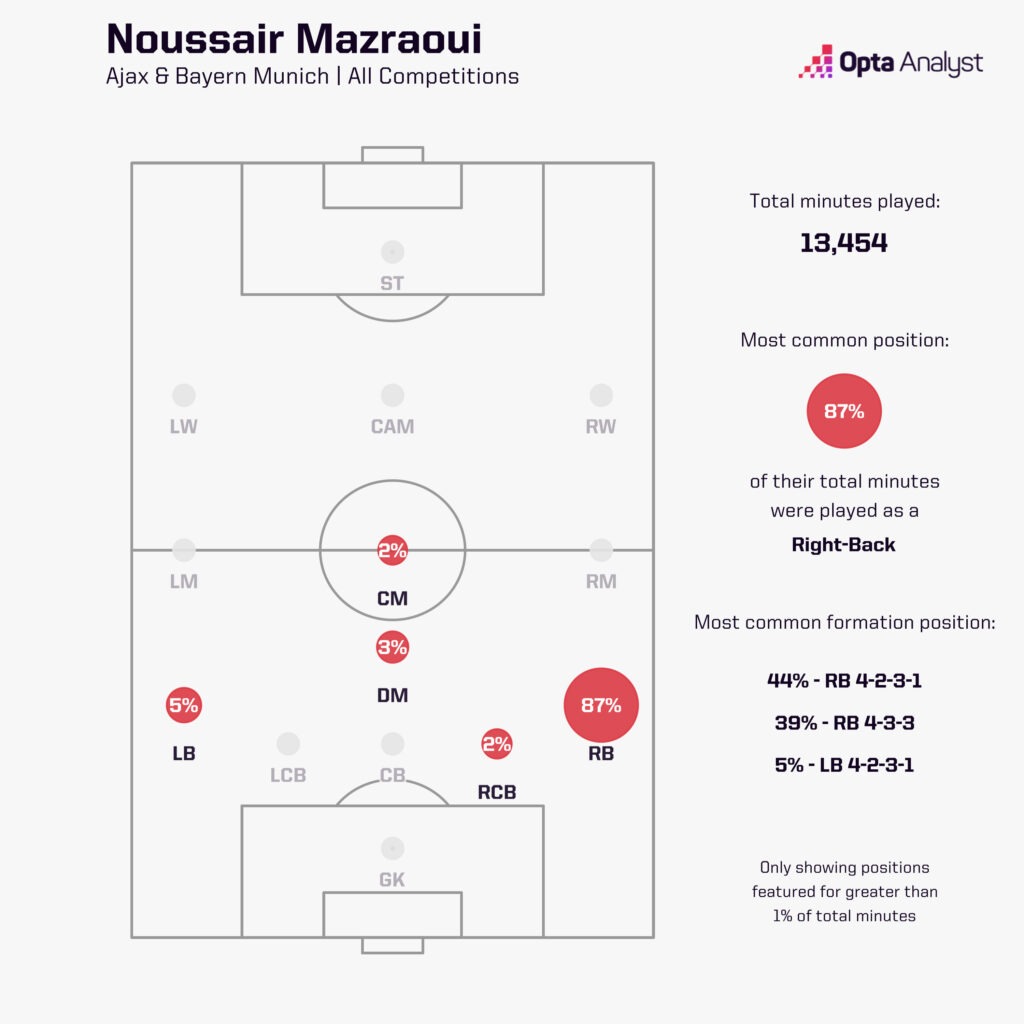
Some supporters might still be having nightmares about the club’s defensive injury crisis last term, and considering Shaw’s patchy fitness record and the fact Malacia still isn’t expected to be fit until at least October, having both Dalot and Mazraoui able to fill in on the other flank will be welcome.
Having said that, it’s worth pointing out Mazraoui’s own injury record might unsettle the same fans as his time at Bayern was disrupted by short spells on the sidelines.
If Mazraoui can remain fit for the majority of time, however, there’s a lot to like about this deal. Wan-Bissaka’s technical weaknesses have frustrated some throughout his time at the club, while United’s lack of control last season was alarming; in theory, Mazraoui could help in that respect and there’s no doubt he’s a better technician than the man he’s replacing.
It might be slightly risky to go forward without having a defensive-minded right-back in reserve, but Dalot has improved considerably in that respect and perhaps greater attacking purpose across the board is part of what United need. Mazraoui certainly appears to be the kind of player who’ll be appreciated at Old Trafford.
Enjoy this? Subscribe to our football newsletter to receive exclusive weekly content. You should also follow our social accounts over on X, Instagram, TikTok and Facebook.
